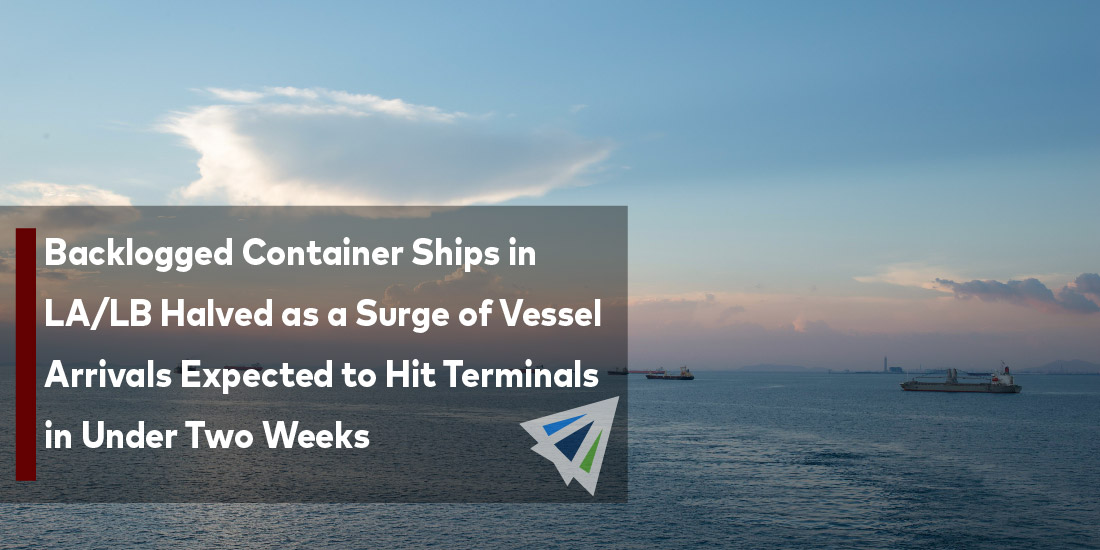Backlogged Container Ships in LA/LB Halved as a Surge of Vessel Arrivals Expected to Hit Terminals in Under Two Weeks
The southern Californian ocean ports are stuck in a constant struggle with congestion. They are the busiest terminals, bearing the load of almost all Asian exports, and the last two years have been anything but friendly to the port operations at Long Beach and Los Angeles.
However, congestion has recently let up quite a bit (although it hasn’t gone back to pre-pandemic levels). As of Wednesday, this week, the number of container ships waiting off the coast dropped to 50. While this is still severe congestion, it’s drastically smaller than the 109 vessels that were waiting offshore on January 9. Officials are warning shippers that the improved efficiency on port grounds to dock and unload container ships may be short-lived though.
Incoming Surge of Ships: Congestion Expected
Marine terminals and analysts are warning that an incoming surge of container ships is going to overload terminals on the port grounds that are already maxed on capacity, which will increase the ship queue again.
Since February, the ship queue has been staying between 50 to 60 vessels, but that’s expected to change soon. Ships that are leaving Asia are fully loaded and will certainly put immense pressure on the southern Californian ports.
WAVE, the Port of Long Beach’s digital platform, is forecasting an increase in import volume of around 33.8% (109,507 TEUs) beginning the week of March 20 in comparison to this week. Signal, the Port of Los Angeles’s digital platform, is expecting an increase of 63.4% (159,819 TEUs) over the same period.
The Sea-Intelligence Maritime Analysis showed that the queue of ships leaving Asia in early March was higher than expected, and with a roughly two-and-a-half-week journey, those ships are going to be hitting the port shores relatively soon. Modeling analytics suggest that congestion could return to the levels of 100 to 105 ships waiting offshore.
Ports vs. Inland Supply Chain: Who’s to Blame
Everyone is very focused on the port grounds in southern California, and for a good reason—things aren’t looking pretty from an operational standpoint. However, they have drastically improved over the last year, and significant headway has been made towards restoring the efficiency previously seen on the grounds.
But the blame isn’t all on the ports. In fact, much of the congestion is created by bottlenecks within inland supply chains. Until these bottlenecks are fixed, we can’t expect to see much change in the efficiency of Long Beach and Los Angeles ocean ports.
Ed DeNike, the president of Long Beach terminal operator SSA Containers, says the main source of the congestion are warehouses who are incapable of processing even the reduced volume of imports seen in the last several weeks. This leads to gridlocks on port grounds because, despite adequate staffing and operational efficiency on the docking and unloading side, warehouses are unable to accept import containers as they wrestle to reduce the congestion they are already experiencing.
If you would like more information regarding this topic, contact our team at InterlogUSA and we will be happy to assist you on any questions or comments you may have. In addition, we have our weekly market updates that can provide you with relevant freight news, updates, developments across the industry, and more.
